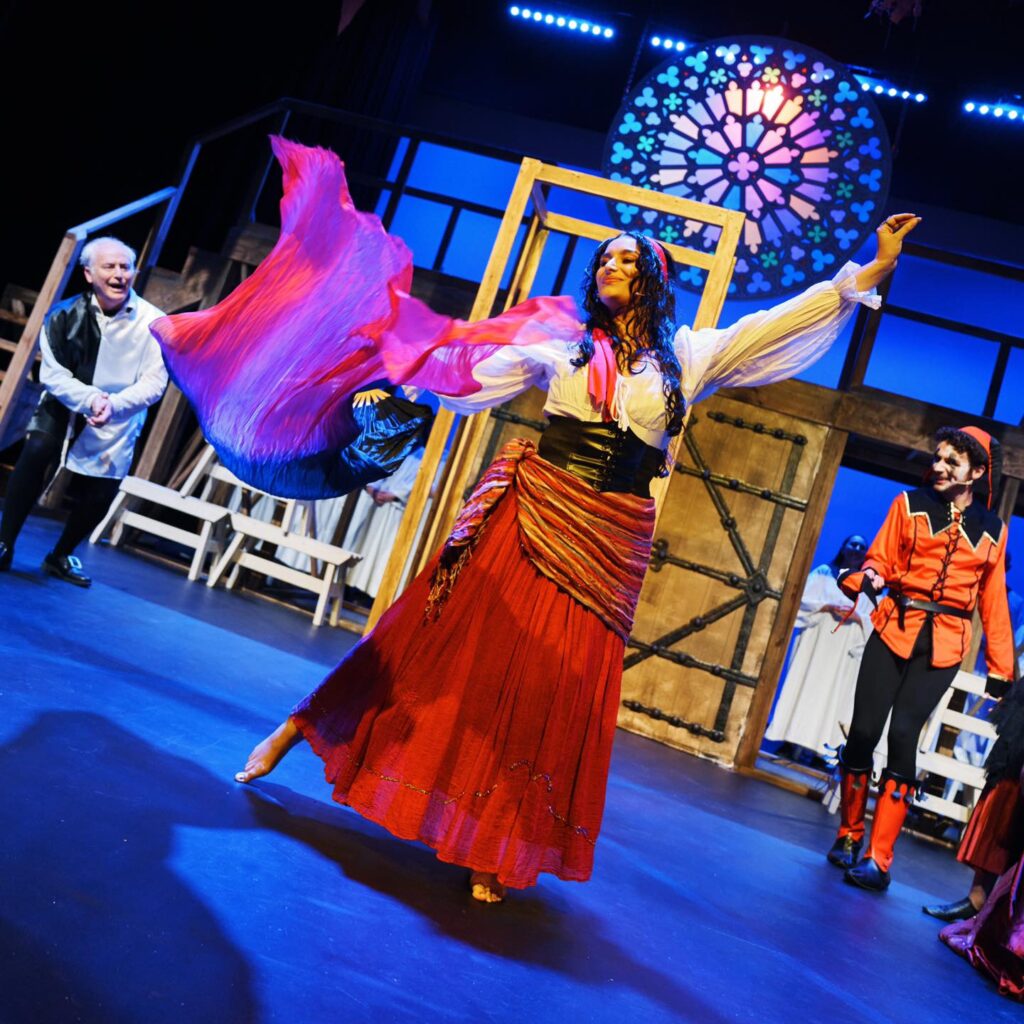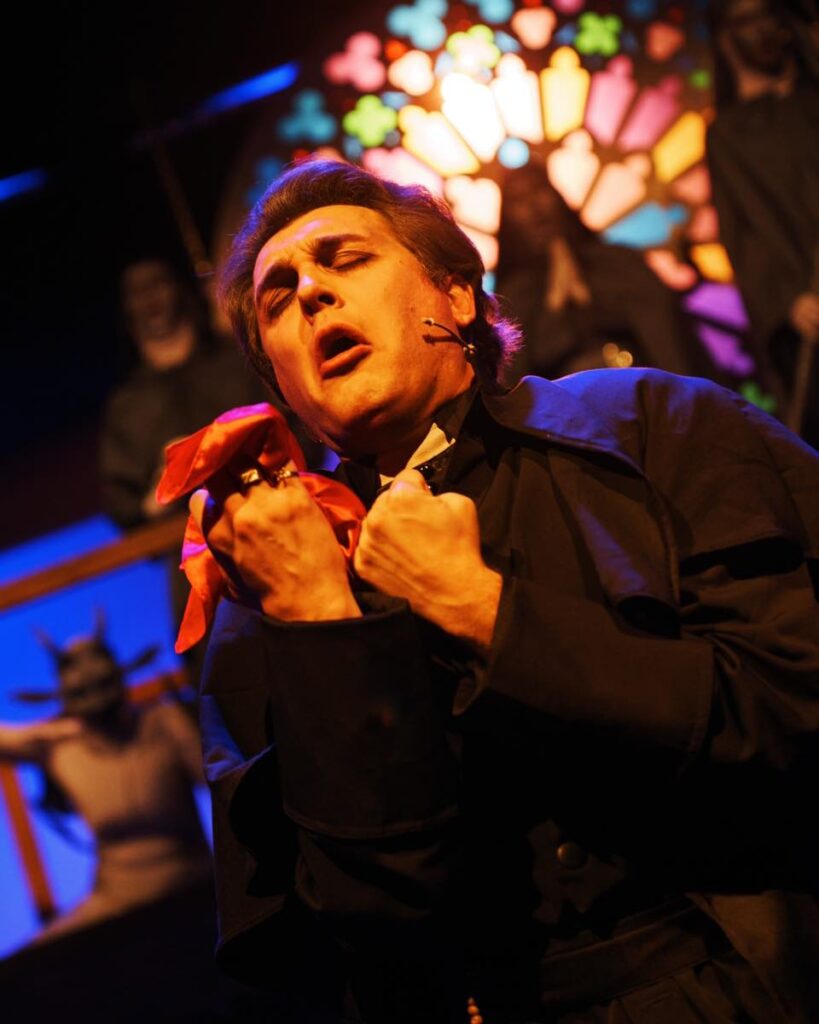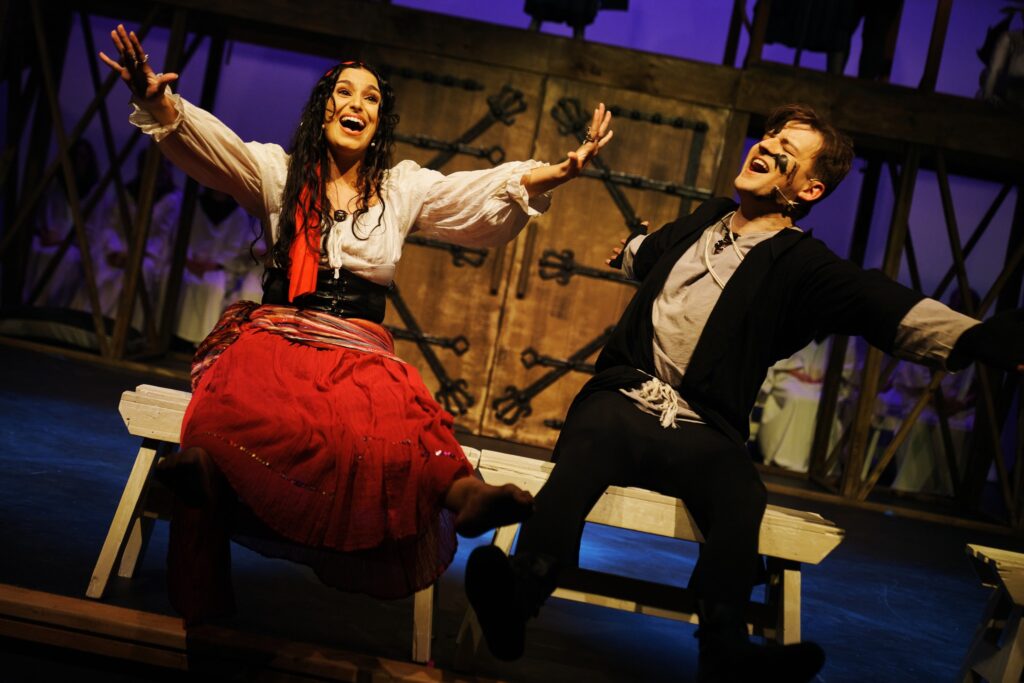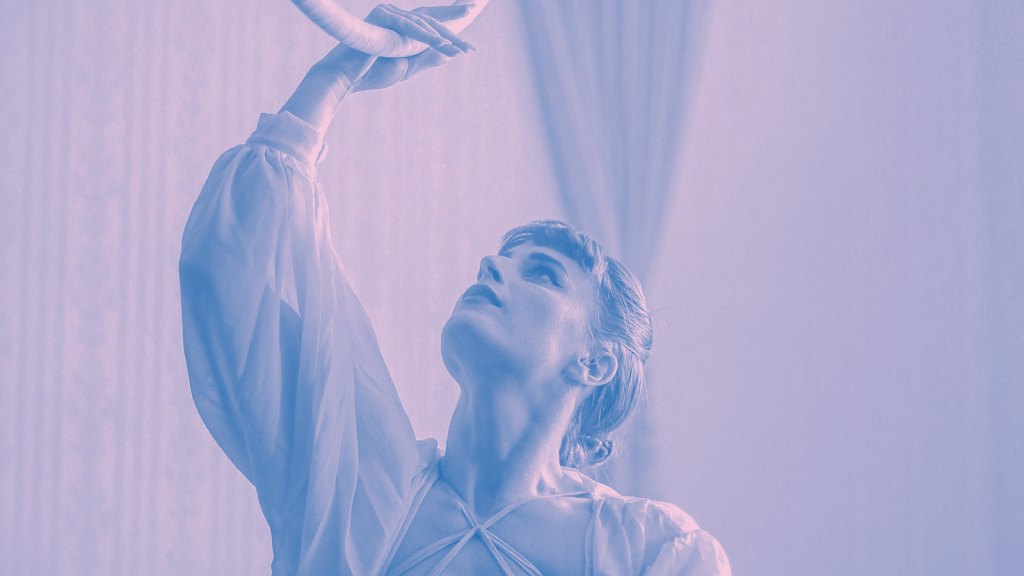
‘The Hunchback of Notre Dame’ // Beenleigh Theatre Group
‘The Hunchback of Notre Dame’ was sincère.
Bells are ringing in Beenleigh as the Theatre Group unveils its latest production, ‘The Hunchback of Notre Dame’. Based on Victor Hugo’s haunting novel, the story takes its theatrical form at Crete Street Theatre, as the well-known Disney classic comes to life on stage.
Weaving through medieval Paris, the story tells the tale of Quasimodo (Michael Ware), a bell-ringer who is kept away in isolation because of his appearance, and who finds companionship in the gargoyles and statues on top of the tower. Quasimodo’s world shifts dramatically when he encounters the beautiful Esmeralda (Nykita O’Keeffe), who shows him kindness despite his appearance. As their friendship blossoms, it sets off a chain of events that challenges societal norms and ignites a fierce conflict between the righteous Phoebus (Adam Goodall) and the sinister Dom Claude Frollo (Reagan Warner).
Penned by Peter Parnell with music by Alan Menken and lyrics by Stephen Schwartz, ‘The Hunchback of Notre Dame’ explores profound themes of isolation and cruelty. Known widely through Disney’s 1996 cinematic adaptation, the story made its Broadway debut in 2014, blending gothic theatre and musical theatre with elements of epic storytelling, all while capturing the enduring social injustices and moral dilemmas that resonate in society even today.
Beenleigh Theatre Group’s production, led by director Bradley Chapman, successfully took audiences on a vagabond journey to Paris, France. Set design, constructed by Glen Heriot and James Thomson, was a standout within the production and featured a simple yet evocative design, complete with a notable and large, circular ‘Rose window’, symbolising the Notre Dame cathedral. The set also had a multi-level structure, with a wooden balcony that was bookended with stairs on either side. This design effectively created spaces, that enhanced the versatility and functionality of the world and enabled actors to easily transition in time and place.
Chapman’s direction cleverly played with the set design to enable seamless scene transitions with simultaneous actions: a scene might unfold atop the bridge while actors prepare below, or as one character exits via the stairs, another enters through the doors. Lighting design, by Perry Sanders, enhanced these sectioned areas, and the minimalistic set became transformative within various settings. A highlight was the lighting that shone through the stained glass design of the cathedral window and bathed the rustic stage in various hues of colour, which emphasised the cultural and emotional richness of the story. While Chapman has a strong eye for utilising transformative set pieces and keeping the action flowing in innovative ways, during the final high-paced sequence, where actors banged down the doors on the outside while others hid inside, the staging felt a little confusing as we flipped between settings in the same playing space. This could be tightened further or additional lighting cues added to clearly define where we were at during various points of the dialogue.
Sound design strategically employed backing tracks to deliver the full musical experience, amplified by a choir that added haunting Latin chorales from behind the scenes: their candlelit silhouettes behind the set added to the atmosphere of the world. Unfortunately, the sound levels were notably inconsistent. Issues with microphone timing and volume control sometimes resulted in the backing tracks overpowering the actors’ voices, and at times, the full company’s sound became piercingly loud, disrupting the overall audio balance of the performance.
Michael Ware brings an endearingly heartfelt depth to Quasimodo and delivers the character with the utmost sincerity. Special credit to the creative team for showing the actor becoming Quasimodo on stage, with Ware wrapping a bag around his body to become a hunch, and putting black streaks on his face with paint. While the theatre could have easily chosen to use special effects makeup, this choice is incredibly tasteful and not only acknowledges an able-bodied man playing the role but also doesn’t make disability tokenistic.
Nykita O’Keeffe brings a vibrant portrayal of Esmeralda and captures her free-spirited gypsy roots. Her entrance into the show during “Rhythm of the Tambourine” is particularly striking and showcases her strong vocal abilities. In fact, O’Keeffe is the vocal standout in this production. O’Keeffe together with Ware build a sincere chemistry with their leading characters, and “Top Of The World” is a heartfelt duet that’s playful and joyous.
Reagan Warner is perfectly cast as Dom Claude Frollo and easily enters his iconic villain era. Warner’s facial features and expressions, along with his masterfully arched eyebrows contribute to a deeply menacing performance. A skilled actor above anything, Warner’s fearsomeness is further amplified when he is doused in a sinister red glow of lighting during his song “Hellfire” (this reviewer’s favourite moment of the production). This visual, combined with Frollo’s rigid moralism and internal conflict, vividly brings the character’s villainous nature to life.
Adam Goodall delivers a stalwart performance as Phoebus, embodying the gallant qualities of the captain with a strong, assured presence. Harrison Port imbues ClopinTrouillefou with a lively gypsy jester flair, carrying a stick puppet, which was unfortunately underutilised and had the potential to enhance his performance with layers of mischief and disguise.
The statues and gargoyles, played by Rhys Cates, Brooke Garwell, Hamish Stone, Hannah Collins, and Alana Ellison, worked seamlessly together, and their costuming was effective and not overdone. However, the consistency of their accents needs refinement to better align with the time and setting of the musical. Notably, one gargoyle’s high-pitched Blinky Bill-like vibe was out of sync with the others.
A large ensemble supported the production and leading cast. There were, however, a few moments where some ensemble members could tighten their performance within the collective. As the show uses backing tracks, it may be worthwhile for ensemble members to have contingency plans for when cues are missed, a prop is dropped or a costume change is delayed. Unfortunately, when this does occur, there’s little done to mask these errors, which pulls focus from the main action. By maintaining character and reacting appropriately the performance would continue to be seamless.
Beenleigh Theatre Group’s ‘The Hunchback of Notre Dame’ rings true and delivers a harmonious community performance. The production proves that at the heart of every classic tale is a timeless message that resonates from the top of Notre Dame to the streets of Beenleigh.
‘The Hunchback of Notre Dame’ performs until Saturday 22 June 2024 at Crete Street Theatre. For more information visit their website.










Responses